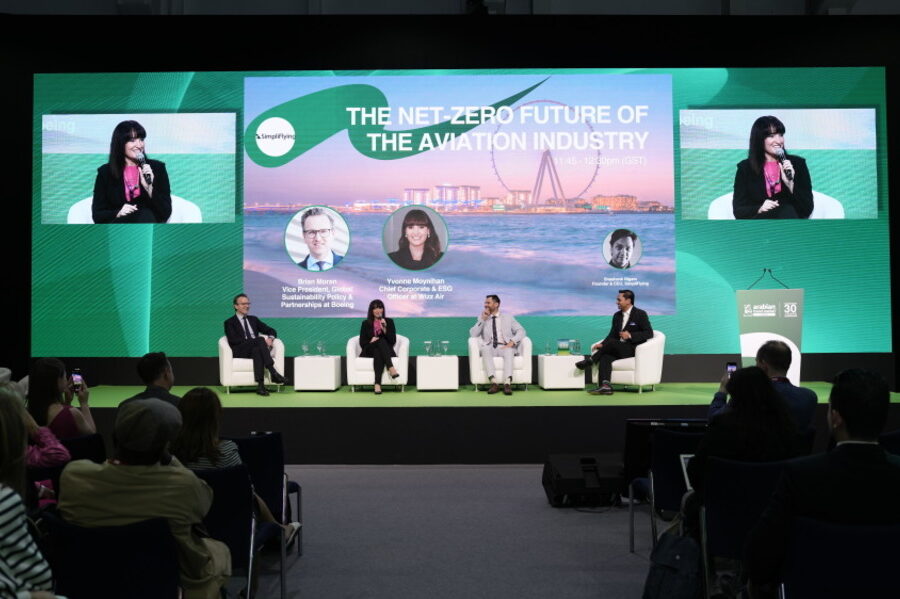The last two years have seen a resurgence in air travel and while this growth trend provides a welcome boost for the aviation industry, the increase in air traffic places a greater burden on the environment. To explore solutions that go beyond carbon offsetting, Shashank Nigam, Founder and CEO, SimpliFlying gathered a panel of experts on the Global Stage at the Arabian Travel Market (ATM) 2023 to discuss the actions required to futureproof the air travel industry.
The engaging panel included Brian Moran, Vice President of Global Sustainability Policy and Partnerships, at Boeing; Yvonne Moynihan, Chief Corporate and ESG Officer at Wizz Air and Dave Rowse CEO of CarbonClick, with each sharing their take on the strategies and challenges of flying net zero.
Read more: Investopia 2023 discusses the Future of aviation and space tourism
The speakers unanimously agreed that the use of Sustainable Aviation Fuel (SAF) plays a key role, in helping the industry to meet its long-term sustainability goals. Moynihan said: “From 2025, all airlines will be required to use SAF fuel. To get ahead, Wizz Air has invested £5 million (AED 22,923,120) in a UK-based SAF producer called Firefly to support the development and certification of SAF produced from sewage sludge. This agreement gives us the potential to save 1.5 million tonnes of CO2-eq. Airlines must get behind SAF production because there is such limited supply currently.”
The experts agree that the cost of SAF is one of the major barriers in the immediate term. Rowse commented: “Several airlines are working to tackle the prohibitive cost of SAF, including Etihad Airlines which subsidizes the cost for those passengers choosing to offset their journeys with SAF. It’s going to take five to 10 years before reasonable volumes are produced. While there is consumer demand for SAF, passengers are not prepared to pay for the full cost of it – therefore subsidies from airlines could help encourage the process and ultimately, drive production along more quickly.”
Net zero by 2050
To strike a balance between short and long-term capabilities, Boeing is focusing on developing today’s fuel-efficient aircraft while investing in technologies that will allow the airline industry to project into the future and ‘de-risk. Last year, Boeing announced the launch of Cascade, a data modeling tool that enables airlines to map out the optimal routes to achieve net zero. In addition, the corporation has teamed up with NASA to build, test, and fly a full-scale demonstrator aircraft and validate technologies aimed at lowering emissions.
Moran concluded: “There are approximately 24,000 planes in the air today and that number is going to double in the next 20 years. These will be conventional airplanes, and to decarbonize and get on the trajectory to net zero by 2050, airlines will have to fly on SAF, so our priority is to make sure that our planes are 100% SAF capable. We must invest in the here and now.”

Future of sustainable travel
The 30th edition of ATM is exploring the future of sustainable travel in line with the theme, ‘Working Towards Net Zero’. Having officially initiated its journey to net zero, the conference program explores how innovative sustainable travel trends are likely to evolve, allowing delegates to identify growth strategies within key vertical sectors, while providing a platform for regional experts to explore a sustainable future ahead of COP28, which will take place in November 2023 at Expo City Dubai.
For more on ATM 2023, click here.








